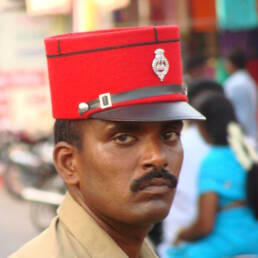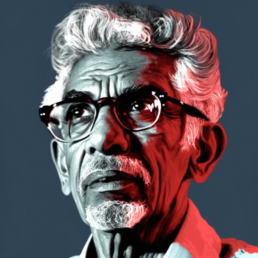A seemingly modest & wrinkled pepper from Trinidad is probably one of the hottest to exist. This deadly Caribbean pepper is, intriguingly, named after an even more fascinating Indian town where Mangal Pandey sparked the Sepoy Mutiny.
This particular pepper is a 7 Pot Barrackpore. The 7-pots-family earned its name due to its ability to heat 7 pots of stew. The Barrackpore is excellent for hot sauces and powders owing to its fantastic flavour, and unrelenting heat.
The 7 Pot Barrackpore starts at the same Scoville Heat Unit (SHU) as the regular ones, but its highest level has frequently approached 1.3M SHU, which can easily set your face on fire. How the name Barrackpore came about, though, is quite intriguing.
The pepper was named after the place where it was originally discovered – the small hamlet of Barrackpore. In southern Trinidad and Tobago, about one hour’s drive from the Port of Spain, it was a village with a rich history of sugarcane and oil fortunes.
Now why exactly was this village in Trinidad named after a bustling town in West Bengal? Situated in north Kolkata and famous for its tranquil river views, iconic Biriyani eatery and the historic revolution of 1857: Barrackpore.
The first British barrack in India was established in Barrackpore, in 1772, giving the town its name. In 1857, the town witnessed greatness when Mangal Pandey, a sepoy stationed at the Barrack, demonstrated his dissent against the regiment, armed with a loaded musket.
Mangal Pandey, subsequently, was tried by a court marshal and his death was mourned by sepoys throughout Bengal. Only a month later, his act of rebellion sparked a larger revolution in India. Barrackpore became a hotbed of mutiny.
What does that have to do with the island in the Caribbean, though? We travel back to May 1845, when ‘Fatel Razack’ became the first ship to transport Indian indentured labourers from India to Trinidad. The practice continued to bring thousands of Indians to the Caribbean up until 1917.
Over 140,000 Indians were brought to the islands during this time. Along with their religion, food, and clothing, the indentured labourers also brought the names of the towns they were from. And there lies our story.
The vast majority of these Indian immigrants came from North India via the port of Calcutta, where they were known as Kalkatiyas; those who left from South India via the port of Madras were referred to as Madrasis in Trinidad.
Intriguingly, they gave familiar place names to the areas where they settled in Trinidad, mainly after the places the migrants came from. There were settlements named after Calcutta, Fyzabad, Coromandel, Malabar, Madras, and Patna, to name a few.
However, it was not just the landless Indian peasants who came to Trinidad. Several academics assert that many Indian Sepoys who participated in the great 1857 uprising and fought against the British also fled to Trinidad to avoid execution.
Several accounts claim that the Sepoys from the cantonments of Barrackpore gave their settlement the name after the Bengal town where the uprising originated. It’s not a mere coincidence that there is another settlement named Chandanagore, not too far from Barrackpore.
The idea that their ancestors participated in the Great Sepoy Mutiny was one that many people in this Trinidadian community deeply embraced. A true tale has been kept hidden by the working-class community in the southern Trinidadian sugarcane fields.
Source: INDIAN HERITAGE IN TRINIDAD, WEST INDIES / J. C. JHA / Caribbean Quarterly,
Diaspora and Nation-Building / Ruchi Verma,
Indian Diaspora in the Caribbean, History, Culture and Identity/Brinsley Samaroo / Rattan Lal Hangloo, pepperhead.com. Wikiemdia commons.




